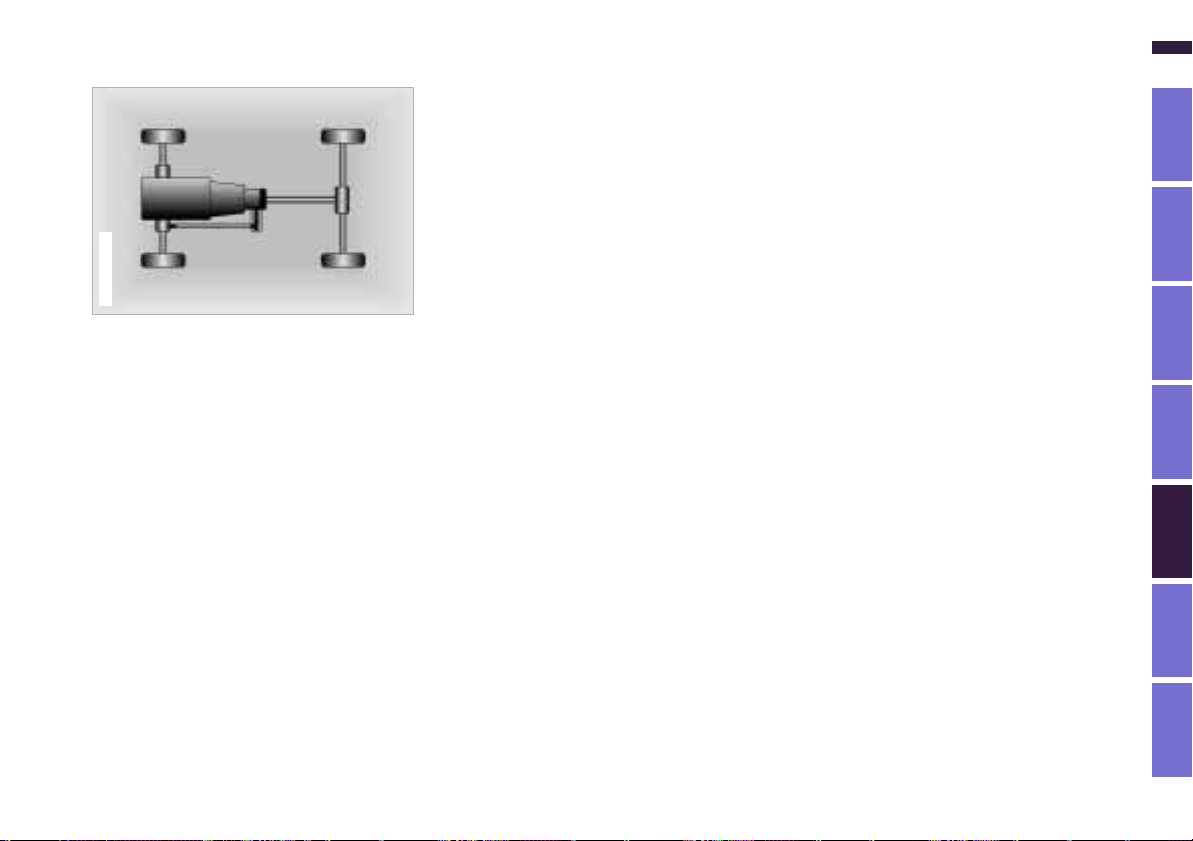Loading ...
Loading ...
Loading ...

Index Data Technology Repairs Car care Controls Overview
197n
The transmission of power to the four
drive wheels is provided permanently
through a transfer box. The distribution
of torque between the front and rear
axles is 38% to 62%.
Traditional differential locks at the front
and rear axles and in the transfer box
are not required. Their function is taken
over by automatic braking intervention
at all four wheels. These traction inter-
ventions are governed by Automatic
Differential Brake (ADB-X), a sub-func-
tion of DSC.
If a wheel tends to slip, it is braked
automatically by ADB-X until it once
again gains traction, and drive force
can be transmitted to that wheel. In
addition, the drive force is distributed
to the remaining wheels during this
530us133
system intervention. Engine output is
also reduced if necessary.
When the DSC is deactivated, the
ADB-X traction intervention is set for
the maximum drive force. However,
the engine intervention and the stability
controls are no longer available. For
this reason, DSC should only be deacti-
vated in the exceptional circumstances
described on page 95.
The BMW X5 is a vehicle for all types of
roads. The permanent four-wheel drive
provides a significant degree of vehicle
stability and tractive power under all
road conditions. It assists in critical
situations such as driving in extreme
winter conditions or on bad roads.
Precision sensors monitor the wheel
speeds, the steering angle, lateral
acceleration, brake pressure and the
movement of the vehicle around its
vertical axis.
If differences in wheel speeds occur, the
system recognizes the danger of wheel-
spin and reduces the engine's drive
torque. If necessary, the system also
responds with additional braking inter-
vention at all four wheels.
In addition, DSC permanently monitors
the vehicle's current operating condition
and compares it with an ideal condition
that is calculated from the sensor
signals. If deviations from this occur
(understeering or oversteering, for
instance), DSC can stabilize the vehicle
in fractions of a second by adapting
engine output and with the assistance of
braking intervention at individual
wheels. This way, as long as the skid
can still be managed under the laws of
physics, these kinds of dangerous skids
are prevented even before they can
start.
You may need some time to become
accustomed to this system intervention.
However, it provides optimum drive
force and vehicle stability. The braking
intervention may be accompanied by
certain sounds specific to the system.
Four-wheel drive DSC
Online Edition for Part No. 01 41 0 155 558 - © 09/00 BMW Group
Loading ...
Loading ...
Loading ...